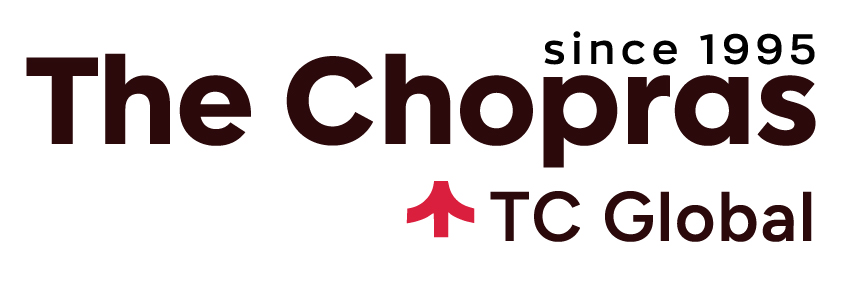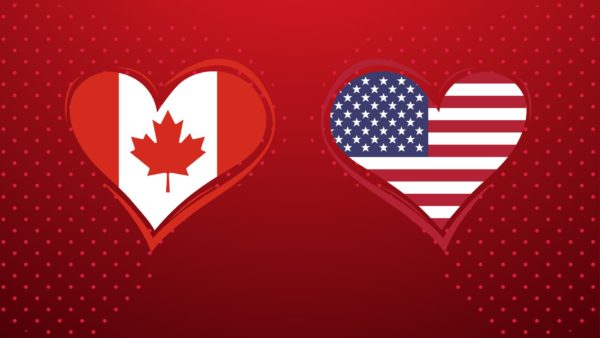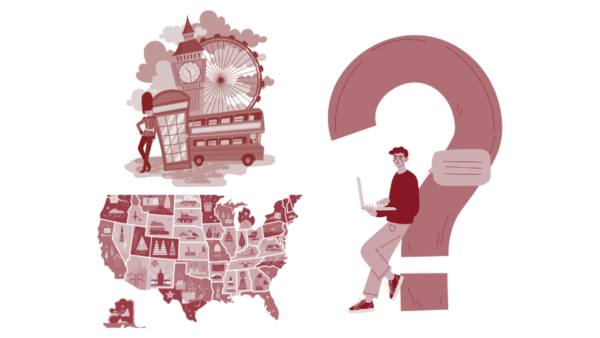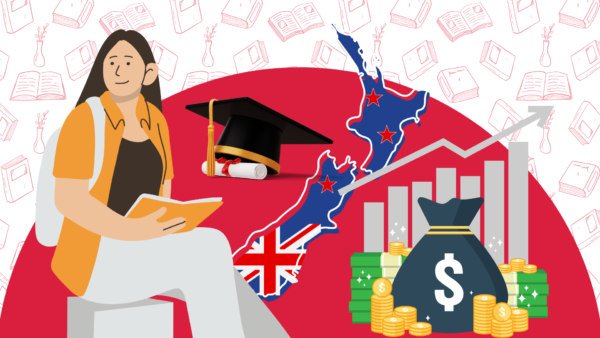
Renowned for their world class education systems, infrastructure and research facilities, both Canada and the US are top global ed destinations. In recent years, the number of students choosing the US has plummeted, while Canada has marched its way to the top. This shift could be attributed to a number of reasons.
- The US government feels that they are closer to the saturation point when it comes to immigrants.
- US visa applications and processing became stringent during the pandemic, especially regarding work visas.
- The Canadian government is actively taking measures to welcome international students by capping fees and providing work permits.
- Despite recent incidents, Canada provides a much safer environment than the US.
Whatever the reason might be, the choice between the US and Canada is an important one to make. Here’s a quick summary of their higher education systems.
|
The United States of America |
Canada |
| Top Universities with world Ranking |
- 1 – Massachusetts Institute of Technology (MIT)
- 3 – Stanford University
- 5 – Harvard University
- 6 – California Institute of Technology (Caltech)
- 10 – University of Chicago
|
- 31 – McGill University
- 34 – University of Toronto
- 47 – University of British Columbia
- 110 – University of Alberta
- 116 – Université de Montréal
|
| Duration |
- Bachelor’s degree: 4 years
- Master’s degree: 2 years
|
- Bachelor’s degree: 3-4 years
- Master’s degree: 1-2 years
|
| Choosing Majors/ Specialisations |
- Admission is to a specific school/ stream of study.
- You can take a few courses and then declare your major at the end of your 1st or 2nd year.
|
- In some universities, admission is to a specific school/ stream of study.
- You can take a few courses and then declare your major at the end of your 1st year.
- Some universities require you to declare your major at the time of admission.
|
| Top Choice of Subjects |
- Engineering
- Business and Management
- Computer Science, Data Sciences and IT
- Mathematics
- Medicine
- Physical and Life sciences
|
- Biosciences
- Engineering
- IT and Data Sciences
- Media and Journalism
- Psychology
- Education
|
| Average Tuition fees |
- Undergraduate study: 38,200 USD
- Postgraduate study can range from 25,000 – 120,000 USD.
- Ivy Leagues and other tier 1 schools are significantly more expensive
|
- Undergraduate study: 36,100 CAD (approx. 26,690 USD)
- Postgraduate study: 21,100 CAD (approx. 15,600 USD)
|
| Cost of Living per month |
|
- 1,250 – 2,000 CAD (900 – 1,500 USD)
(note: cost of living can vary widely if you choose to live more expensively in both the countries)
|
| Work While you Study |
- Students with a valid F-1 visa can work part-time up to 20 hours per week during semester and up to 40 hours during breaks and vacations.
- The minimum wage is $7.25 per hour and can go up to $15.
|
- Students with a valid study permit can work up to 20 hours per week when school is in session and more during breaks.
- The minimum wage is $13 and can go up to 16.77 Canadian dollars, depending on the province.
|
| Post-Study Work Regulations |
- Optional practical training (OPT) at the end of your course followed by employer-sponsored work visas.
|
- Post-graduation work permit (PWGP) which allows you to work in Canada for 3 years.
|
| University vs College
There is a clear difference between universities and colleges in Canada. Universities are larger, more academically oriented institutions that grant bachelor’s, master’s or doctoral degrees. Colleges are smaller, more practice-oriented institutions focussing on professional and vocational training. They offer diplomas and some bachelor’s degrees.In the US, college and university are typically used interchangeably. The vocational training institutes are called community colleges. |
With both nations being leaders in global education, the choice between the two countries is not an easy one. Last year in the US, 125,000 applicants from India were granted student visas while Canada has about 319,000 Indian students enrolled in their institutions. Higher education in the US has been a benchmark dream for countless students while Canada has been a symbol of a more accepting culture and a better quality of life. So, how does one choose between the neighbours?
Your choice primarily depends on your course and the university most suited for your choice of studies. Everything else is secondary. Is the university at the cutting edge of your field? Is the university curriculum matching your needs? Where does the university stand in terms of global recognition? These are the questions you must ask first while choosing.
Then comes all the other factors such as
- The teaching-learning style of the department you are applying to
- The costs involved
- The admissions criteria that you need to meet
- Immigration policies and job opportunities and
- Attitudes towards international students in the university/ city/ country.
Keeping this in mind, here are the detailed pros and cons of studying in Canada vs USA. Let’s dive in.
1. University Rankings
USA:
Of the top 100 universities in the world according to QS World University Ranking, 27 of them are located in the United States. 5 of the top 10 are in the US. Institutions such as MIT, Harvard, Columbia, Sanford and Yale are unequivocally considered leaders in research and in academics.
Canada:
3 of the top 100 universities in the world are in Canada. However, Canada is renowned globally for its high-quality academic programmes and research publications. Despite the lower ranks when compared to the US, Canadian universities are more accessible and provide world class education to its students. They are also highly ranked in specific fields.
Winner:
USA. If you are looking only at the rankings, the USA is a clear winner. However, it is important to remember that competition is extremely fierce for these top universities. Canadian universities can be more accessible for the average Indian student.
2. Choice of courses
While schools in both countries offer countless options to choose from, the choice of courses and the level of flexibility that American universities offer are incomparable. Universities in the US have way more specialisations and niche areas of study when compared to the rest of the world.
Canada’s choice of courses are also limited particularly in the field of medicine. While most universities do offer the programme, it is restricted only to domestic students.
Winner:
USA. The winner in this aspect is clearly the US because of the sheer number of universities. The US has well over 3,000 universities that grant degrees when compared to Canada’s 94.
3. Tuition Fees
USA:
For international students, especially if you are from India, the cost of studying in the US is one of the biggest obstacles. The average annual tuition for an undergraduate programme is around $38,200 while a master’s programme can range anywhere from $25,000 to $100,000.
According to the Education Data Initiative, a typical overseas student spends about $55,480 per academic year in a non-profit private university. That roughly converts to over 45 lakh INR per year. Without financial aid, this is a fairly large burden to bear.
Canada:
The average cost of a bachelor’s degree is CA $36,100 (approx. US $26,690) while the median cost of postgraduate programmes is around CA $21,100 (approx. $15,600 USD). Specific professional programmes such as MBA, medicine, nursing, dentistry or veterinary sciences are much higher when compared to the median cost of tuition.
Winner:
Canada. Typically, tuition fees in Canada are 20 – 25% lower than that of the US.
4. Cost of Living
When looking at absolute figures, the cost of living in the US appears to be higher than that of Canada. As an international student, you can expect to spend anywhere from $12,000 to $24,000 per year as living costs in the United States. In Canada, these figures range from $10,800 to $18,000 USD.
However, if you are employed, then the average salaries in the US are higher when compared to Canada, as we will see in the next section. Utilities, public transport and consumer goods are also typically more expensive in Canada when compared to the US, however, rents and insurance are cheaper. Canadian healthcare is also a lot more affordable than the US.
Winner:
A tie. The cost of living largely depends on the city and your lifestyle choices. Both countries have their pros and cons, especially when it comes to international students. Some of the most expensive places to live in the US are New York, California, Honolulu and San Francisco while the Canadian equivalents include Vancouver, Toronto, Montreal and Calgary. Check out the section on cost of living to get a more detailed picture.
5. Work permit
USA:
With a student visa, you can work a maximum of 20 hours per week when school is in session and up to 40 hours during breaks. On completion of your course, you can apply for OPT (Optional practical training) with your student visa. You are allowed 90 days to find a job that fits the OPT criteria. This gives you one year (2 years in the case of STEM related work) to work and gain practical experience. Your OPT work experience must be in line with what you studied in the US. After your OPT period is completed, it should be upgraded to an employer sponsored work visa. The most common category is the H1B visa.
Canada:
The work while you study regulations are practically the same when compared to the US. Under a student visa, you are allowed to work a maximum of 20 hours per week and more during holidays. On completion of your course in any of the designated learning institutions in Canada, you can apply for a Post Graduate Work Permit (PGWP). This permits you to temporarily stay and work in Canada. The duration of this stay is proportional to the duration of your course. A maximum of 3 years is allowed under the PGWP route. After which, with the sponsorship of your organisation, you can apply for a skilled worker visa as a step towards permanent residency.
Winner:
Canada. While both countries have their own set of rules and regulations to be followed, visa processing for Canada is fairly more straightforward and lenient when compared to the US. Your permanent residence application can also be processed within six months. American immigration authorities are stricter when it comes to granting H1B visas or a Green Card.
6. Post graduate opportunities and Salary scales
USA:
The US is home to over 100 Fortune 500 companies. The US economy is the largest in the world and has always been considered the land of opportunities. As an international student, it directly translates to more industries and therefore more employment opportunities. Considering the US’s position as an economic superpower, the average salary of someone who has completed a bachelor’s degree is about $59,000.
Canada:
While Canada is the 9th largest economy in the world, it has fewer industries when compared to the US. However, there is also a skill shortage that opens up numerous job options for international students graduating from Canadian universities. Freshers can expect to earn CA $40,000 – $60,000 on graduation.
Winner:
USA. Average salaries are higher in the US when compared to Canada.
7. Language Barriers
USA:
English is the primary mode of communication and the official language. If you are a student applying from India, you will not be facing a lot of language barriers, except perhaps getting used to the local accents.
Canada:
Parts of Canada, especially the eastern provinces such as Quebec and New Brunswick are bilingual with both French and English as their official languages. This might prove to be a barrier since knowledge of French is either required or recommended for some university applications or job opportunities.
Winner:
USA. However, the knowledge of a foreign language like French can boost your profile as a global citizen.
7. Quality of Life
We will compare the differences in standard of living under these four categories.
- Work-life balance: America’s competitive culture skews the work-life balance towards work, especially when compared to Canada. Personal or parental leave is very limited or is granted with a loss of pay. Fierce competition and working overtime are commonplace and part of the American industrial complex. In contrast, Canada emphasises on a better work-life balance. Some Canadian organisations are also experimenting with a 4-day work week.
- Weather: Due to the geographical vastness of both nations, they experience different weather systems in different parts. However, the climate in the US is more moderate and temperate when compared to the harsh winters of Canada.
- Healthcare: The US has one of the most expensive healthcare systems in the world. Health expenditures in the United States average out at $12,914 per person, nearly double the $6,500 spent per person in Canada. (Source: School of Medicine, Ross University). Insurance for international students in the US is also significantly higher.
- Safety: According to the 2022 Global Peace Index, Canada stands 12th in the list of safest countries to live in while the US is ranked at 129. Increasing gun violence, racism and political division make the US less safe when compared to Canada.
Winner:
Canada. Except for the weather, Canada offers a better quality of life to international students when compared to the US. It is more multicultural and accepting of immigrants.
Based on this list, it is clear that both countries have their own set of advantages and disadvantages. The idea of this list is to not give you a final answer but help glean a picture of what to expect should you choose one of these countries. As mentioned earlier, your decision is primarily based on the university and the course of your choosing. However, if you run through the parameters with a specific course and university in mind, you will be able to judge which of the two is better suited for you.















![Best Universities in New Zealand for International Students [2025 Rankings]](https://tcglobal.com/wp-content/uploads/2025/09/Best-Universities-in-New-Zealand-for-International-Students-2025-Rankings-600x338.png)